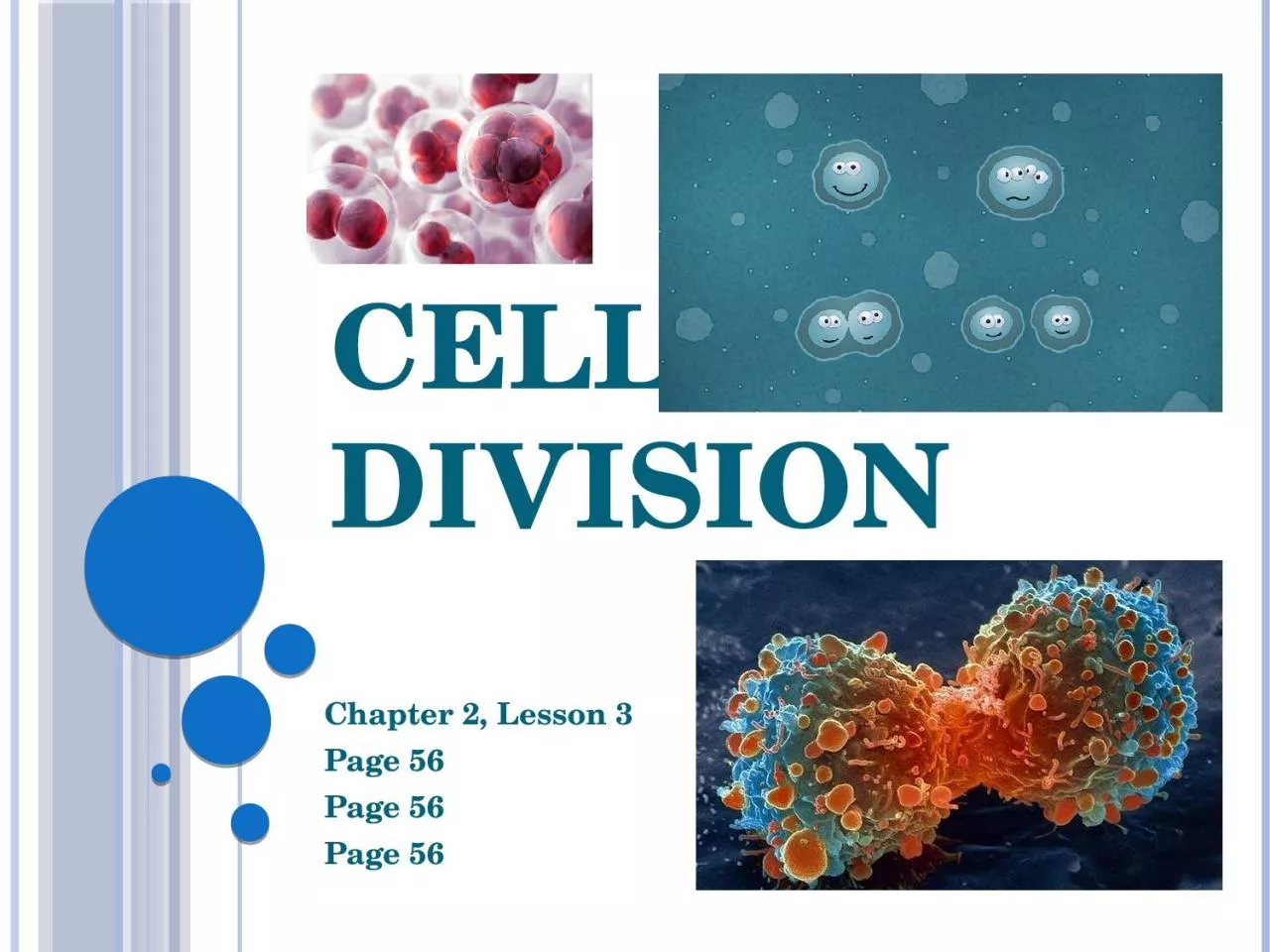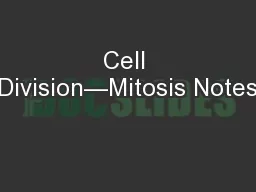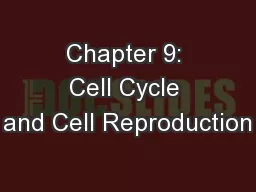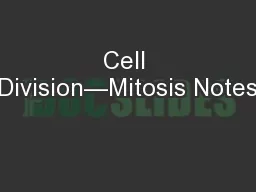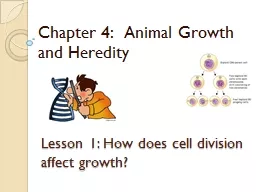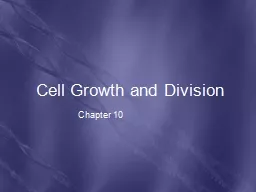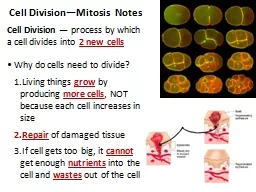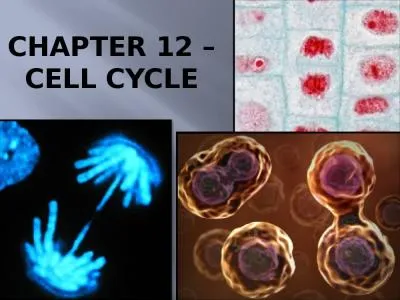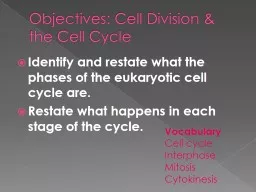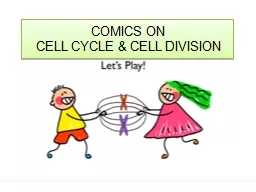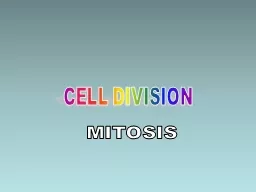PPT-Cell Division Chapter 2, Lesson 3
Author : jalin | Published Date : 2024-01-29
Page 56 Page 56 Page 56 Comparing Cell Cycles The table below compares the length of different cell cycles What Are the Functions of Cell Division Read the My Planet
Presentation Embed Code
Download Presentation
Download Presentation The PPT/PDF document "Cell Division Chapter 2, Lesson 3" is the property of its rightful owner. Permission is granted to download and print the materials on this website for personal, non-commercial use only, and to display it on your personal computer provided you do not modify the materials and that you retain all copyright notices contained in the materials. By downloading content from our website, you accept the terms of this agreement.
Cell Division Chapter 2, Lesson 3: Transcript
Download Rules Of Document
"Cell Division Chapter 2, Lesson 3"The content belongs to its owner. You may download and print it for personal use, without modification, and keep all copyright notices. By downloading, you agree to these terms.
Related Documents

